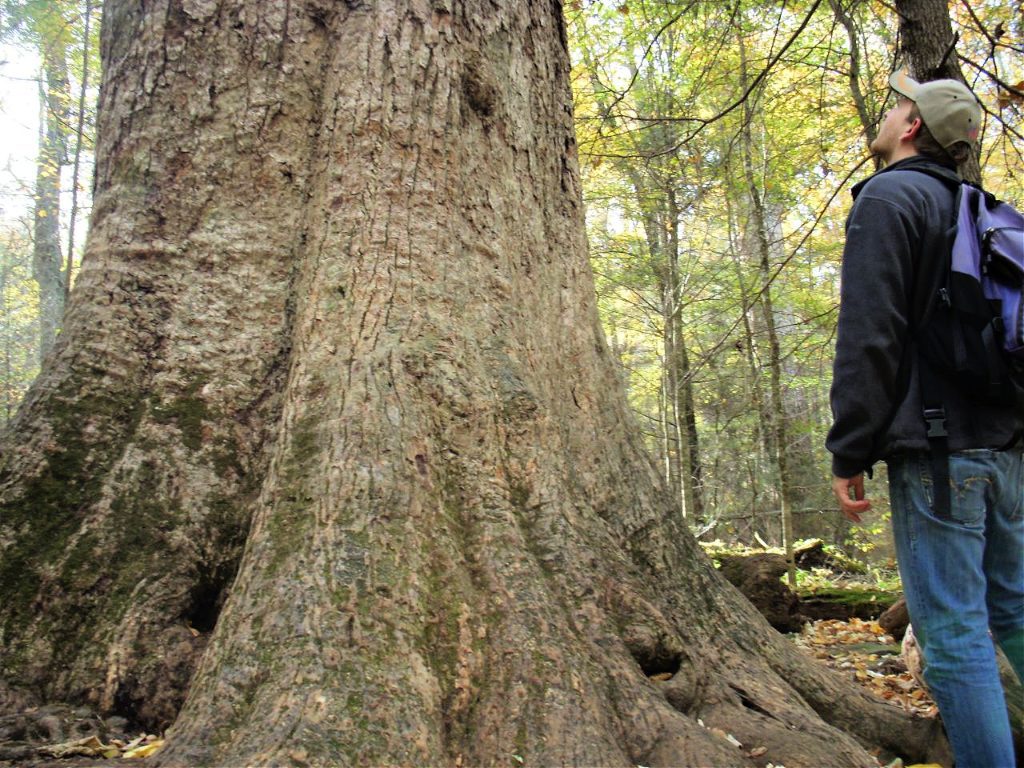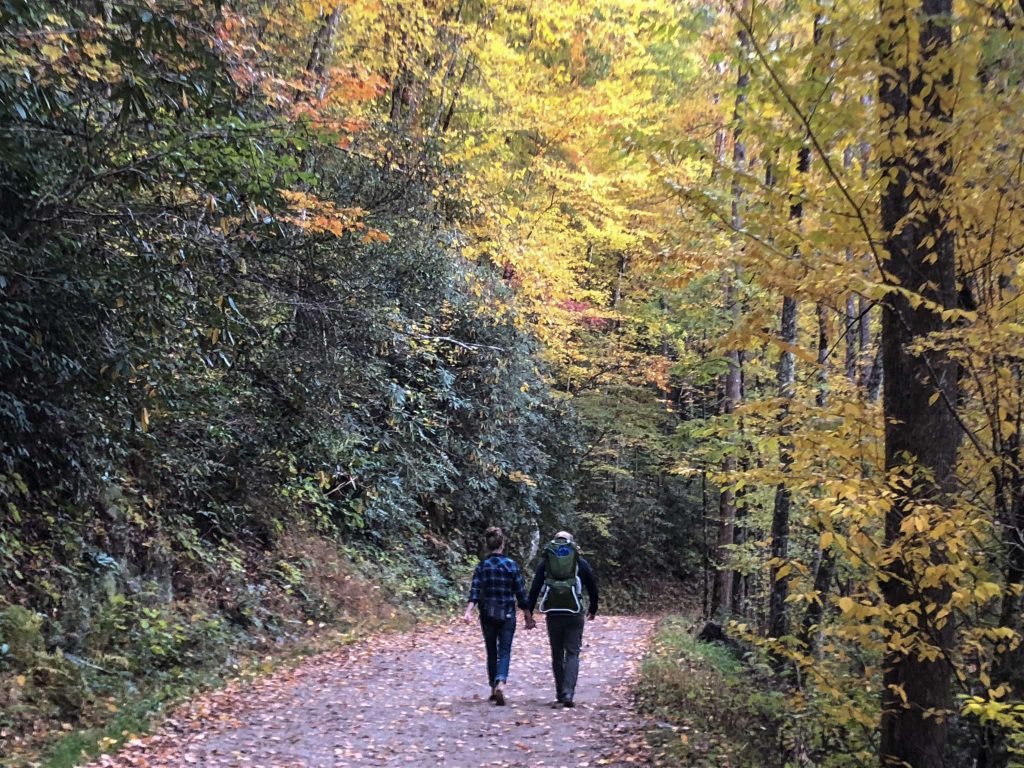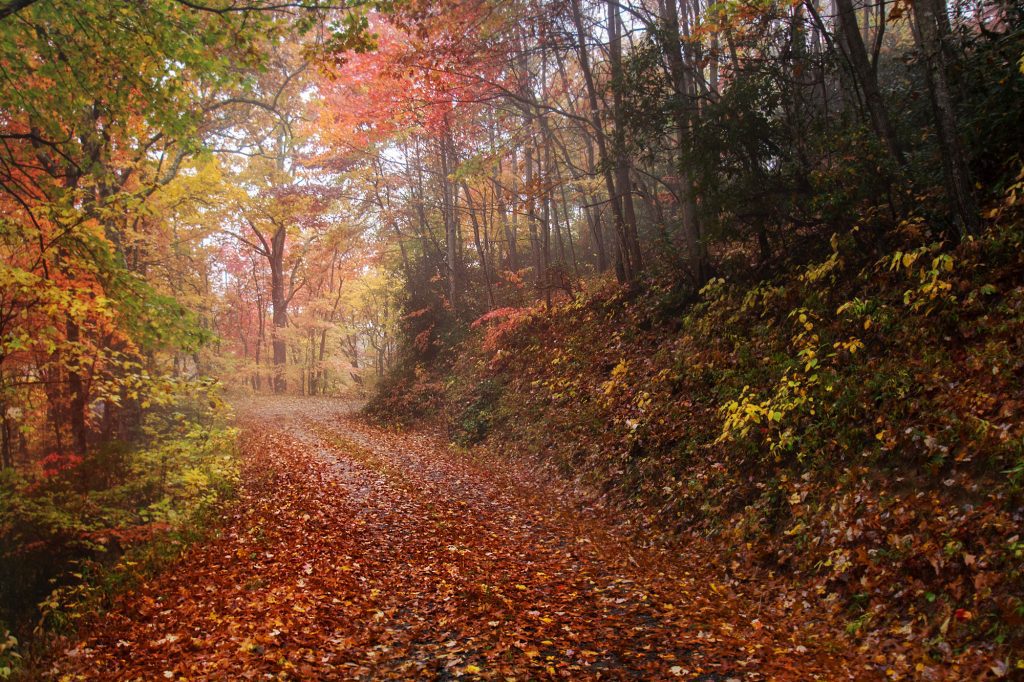The brilliant fall foliage of the NC Smoky Mountains rivals the changing leaf colors anywhere in the country. But, because of our steep elevations and lower rolling foothills, the leaf-looking season here lasts longer than most. Beginning in mid-September and continuing through early November, the NC Smokies offer you plenty of weeks to plan your visit. We think the best way to experience nature’s best show is by hiking through the kaleidoscope of flaming colors. Here are five of our favorite fall hikes.
Appalachian Trail
Considered the Granddaddy of US Trails, the Appalachian Trail runs approximately 2,200 miles between Georgia and Maine. But visitors to Franklin, NC in Macon County, NC can experience some of the most beautiful parts of this iconic trail less 10 miles away.
Once on the trail, take a 4-mile roundtrip hike to the Wayah Bald Lookout Tower, a restored fire watch tower built in 1937 by the Civilian Conservation Corps. Decommissioned in the 1940s after wind and rain damage, this 3-story stone tower rises 53 feet in the air and continues to offer visitors unparalleled 360-degree views of a different kind of fire – the vibrant reds, oranges, and yellows carpeting the numerous surrounding mountains in autumn.
Andrews Bald Hike
If you’re planning a leaf-peeping trip in the near future, consider a hike to Andrews Bald near Bryson City, NC. The 1.8-mile trail begins at the Clingmans Dome parking lot and descends to Andrews Bald, a grassy area named for the cattle herder who brought livestock up there in the 1840s. The final section of the trail ascends through a forest of trees that generally peak in mid- to late-September. Look for Dogwoods, Maples, Sourwood, and Sumac as they turn to a bright, flamboyant red.

Joyce Kilmer Memorial Forest
The Joyce Kilmer Memorial Forests, named for one of this nation’s most prominent nature poets, features 3800 square miles encompassing one of the largest contiguous growths of hardwood trees in the country. An easy 2-mile roundtrip, figure-eight trail leads you past the majestic Yellow Poplars (also known as Tulip Poplars), reaching an astounding 100 feet high and 20 feet around. You’ll also see White Oak, Beech, Red Oak and Basswood trees as they transition from their lush summer green to their blazing autumn colors.
Deep Creek Waterfall Hike
Just outside of Bryson City, NC, is the Deep Creek Waterfall hiking area. With several trail options of varying lengths from .25 miles to 5 miles to visit nearby waterfalls, hikers can choose the one that best suits them. Leaf peepers can spot American Beech and Birch trees flaunting their bright yellow and gold leaves along the way, as well as the orange and crimson leaves of the Sumac, Scarlet Oak, Hickory, and Mountain Maple trees.

Oconaluftee River Trail
If you’re planning your visit for the early part of November, check out the Oconaluftee River Trail in Cherokee, NC. Combine your leaf-peeping with learning the fascinating history of the Eastern Band of Cherokee People. As you hike along this 3-mile roundtrip path, you’ll be treated to every vibrant fall hue in the surrounding foliage. The hike itself is considered easy enough for a stroller, but you can also opt to bike it. Along the way, you’ll be treated to views of the beautiful Oconaluftee River, wildflowers, diverse animal life, and lush mountain scenery as it prepares for the upcoming winter months. The colorful Asters along the riverbank are proof that Mother Nature is putting on her best show.
Revel in the stunning seasonal colors as you follow the interpretive signs along the trail, teaching you about the history, culture and spiritual beliefs of the Cherokee. Each unique sign is written in English and Cherokee and is illustrated with designs created by Cherokee artists. Along the trail, you’ll be witnessing the same stunning fall foliage the indigenous people did a hundred years ago.

